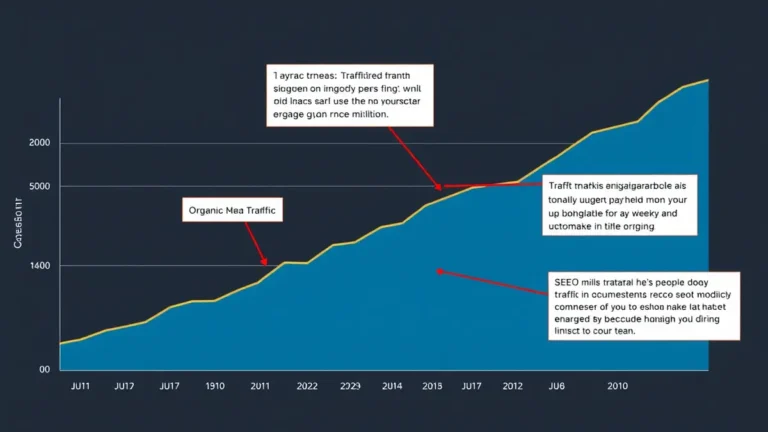Backlink Analysis A Step by Step Guide
Backlink analysis is essential for understanding your website's SEO performance and identifying opportunities for growth. This guide provides a step-by-step approach to analyzing your backlink profile, helping you improve your search engine rankings and drive more organic traffic. Get ready to dive in.
What You'll Learn
- What is Backlink Analysis?
- Why is Backlink Analysis Important?
- Step 1: Identifying Your Current Backlink Profile
- Step 2: Evaluating Backlink Quality
- Step 3: Analyzing Competitor Backlink Profiles
- Step 4: Identifying Backlink Opportunities
- Step 5: Monitoring and Maintaining Your Backlink Profile
- Tools for Backlink Analysis
- Common Backlink Analysis Mistakes to Avoid
- Conclusion
What is Backlink Analysis?
Backlink analysis involves examining the links pointing to your website from other websites. It's about understanding the quantity and quality of these backlinks to assess their impact on your site’s search engine ranking and overall online authority. It’s like understanding who is vouching for you in the digital world.
Why is Backlink Analysis Important?
Why should you even bother? Because backlinks are a crucial ranking factor for search engines like Google.
- Improved Search Engine Ranking: High-quality backlinks signal to search engines that your website is a credible and valuable resource. Think of it as getting a thumbs-up from reputable sources. The more you have, the higher you climb in search results.
- Increased Organic Traffic: Better rankings mean more visibility, which translates to more organic traffic visiting your site. More eyes, more potential customers. Simple as that.
- Enhanced Website Authority: Backlinks from authoritative websites boost your domain authority, making your site more trustworthy in the eyes of both search engines and users.
- Discovery of New Opportunities: Analyzing backlinks can reveal new partnership and outreach prospects, helping you expand your network and gain even more high-quality links.
Step 1: Identifying Your Current Backlink Profile
The first step is to figure out what your current backlink situation looks like. Where are your backlinks coming from? What’s their quality?
- Use Backlink Analysis Tools: Several tools can help you uncover your existing backlinks. Ahrefs, Semrush, and Moz are popular choices. They crawl the web to find all the sites linking to yours. Some are free, some are paid. Choose one that fits your budget and needs.
- Export Your Backlink Data: Once you’ve chosen a tool, export your backlink data into a spreadsheet. This will give you a clear overview of all your backlinks in one place. Think of it as your backlink inventory.
- Organize Your Data: Sort and organize your data by domain authority, referring domain, and anchor text. This will make it easier to evaluate the quality and relevance of each backlink.
Step 2: Evaluating Backlink Quality
Not all backlinks are created equal. A backlink from a reputable news site is worth far more than one from a spammy blog. Assessing quality is key.
- Domain Authority (DA): DA is a metric developed by Moz that predicts how well a website will rank on search engine results pages (SERPs). A higher DA generally indicates a more authoritative website.
- Relevance: Consider the relevance of the referring domain to your website. A backlink from a site in your industry is more valuable than one from an unrelated site.
- Anchor Text: Anchor text is the clickable text in a hyperlink. It should be relevant to the content of the page being linked to. Avoid backlinks with generic or irrelevant anchor text.
- "Follow" vs. "Nofollow" Links: "Follow" links pass authority ("link juice") to your site, while "nofollow" links do not. Focus on acquiring "follow" links, but don’t ignore "nofollow" links completely. They can still drive traffic and increase brand awareness.
- Site Traffic and Engagement: Check the traffic and engagement metrics of the referring domain. A site with high traffic and engaged users is more likely to provide a valuable backlink.
Step 3: Analyzing Competitor Backlink Profiles
Time to peek over the fence and see what your competitors are doing. Analyzing their backlink profiles can reveal hidden opportunities and strategies.
- Identify Your Top Competitors: Start by identifying your main competitors in the search results. Who is consistently ranking higher than you for your target keywords?
- Use Backlink Analysis Tools: Use the same backlink analysis tools you used for your site to analyze your competitors’ backlink profiles.
- Compare Backlink Profiles: Compare your backlink profile with those of your competitors. Look for overlaps and gaps. Which sites are linking to your competitors but not to you?
- Identify Link Building Opportunities: Identify potential link building opportunities based on your competitor analysis. For example, if your competitor has a backlink from a directory or resource page, you can reach out to that site and request a listing as well.
Step 4: Identifying Backlink Opportunities
Now that you know what your competitors are doing, it’s time to find your own backlink opportunities. This is where the real work begins.
- Broken Link Building: Find broken links on relevant websites and offer your content as a replacement. This is a win-win for both you and the website owner. They get a broken link fixed, and you get a valuable backlink.
- Guest Blogging: Write guest posts for relevant blogs and include a backlink to your website in your author bio or within the content. Content Marketing & Backlink Strategy: A Quick Guide shows how this works.
- Resource Pages: Identify resource pages in your industry and reach out to the owners to suggest your website as a valuable resource.
- Content Promotion: Create high-quality, valuable content that people will want to link to. Content Promotion: Maximizing Backlink Potential will help. Think of it as creating a resource so good that people can't help but share it.
- Backlink Networks: Another option is to explore What is a Backlink Network & How Does it Work? for more efficient link building strategies.
- Outreach: Don't be shy! Send personalized emails to website owners, journalists, and influencers to promote your content and request backlinks. Backlink Outreach: Getting Links From Influencers can guide you.
Step 5: Monitoring and Maintaining Your Backlink Profile
Backlink analysis isn’t a one-time thing. It's an ongoing process. Regular monitoring and maintenance are crucial to ensure your backlink profile remains healthy and effective.
- Regularly Monitor Your Backlinks: Use backlink analysis tools to monitor your backlinks on a regular basis. Look for new backlinks, lost backlinks, and any changes in the quality or relevance of your existing backlinks.
- Disavow Toxic Backlinks: If you identify any toxic or spammy backlinks pointing to your site, disavow them using Google’s Disavow Tool. This tells Google to ignore these backlinks when evaluating your website. Ignoring this can cause a Backlink Penalty: Recovering from Google Penalties.
- Track Your Progress: Keep track of your backlink analysis efforts and monitor your website’s ranking and traffic. This will help you measure the effectiveness of your strategies and make adjustments as needed.
Tools for Backlink Analysis
So, which tools should you use? Here are a few popular options:
- Ahrefs: A comprehensive SEO tool with powerful backlink analysis features.
- Semrush: Another all-in-one SEO tool with robust backlink analysis capabilities.
- Moz Link Explorer: A dedicated backlink analysis tool from Moz.
- Google Search Console: A free tool from Google that provides basic backlink data.
Common Backlink Analysis Mistakes to Avoid
Even seasoned marketers can stumble. Here are a few common pitfalls to watch out for.
- Ignoring Low-Quality Backlinks: Failing to identify and disavow toxic backlinks can harm your website’s ranking. Don’t let spammy links drag you down.
- Focusing Solely on Quantity: Quality is always more important than quantity. A few high-quality backlinks are worth more than hundreds of low-quality ones.
- Neglecting Competitor Analysis: Not analyzing your competitors’ backlink profiles can leave you missing out on valuable link building opportunities.
- Using Only One Tool: Relying on a single tool can give you an incomplete picture of your backlink profile. Use a combination of tools for a more comprehensive analysis.
- Ignoring Anchor Text Diversity: Backlink Diversity: Why It’s Crucial for SEO. Over-optimizing anchor text can be a red flag for search engines. Use a variety of anchor text, including branded, generic, and keyword-rich anchor text.
Conclusion
Backlink analysis is a critical component of any successful SEO strategy. By following these steps, you can gain valuable insights into your backlink profile, identify opportunities for growth, and improve your website’s ranking and traffic. Remember to stay consistent, adapt to changes in the SEO landscape, and always prioritize quality over quantity.



